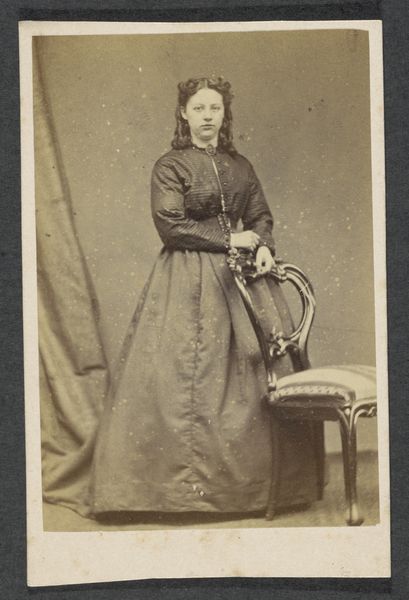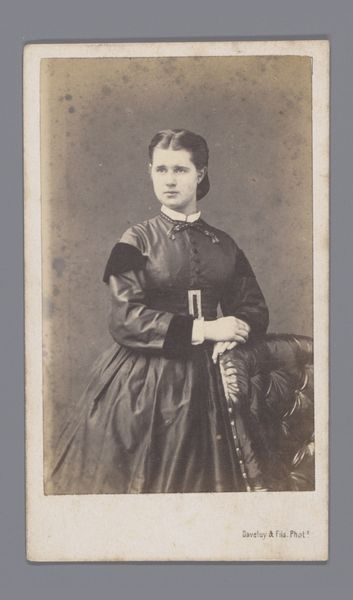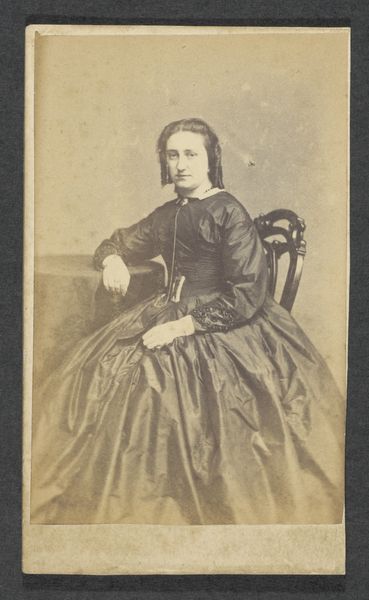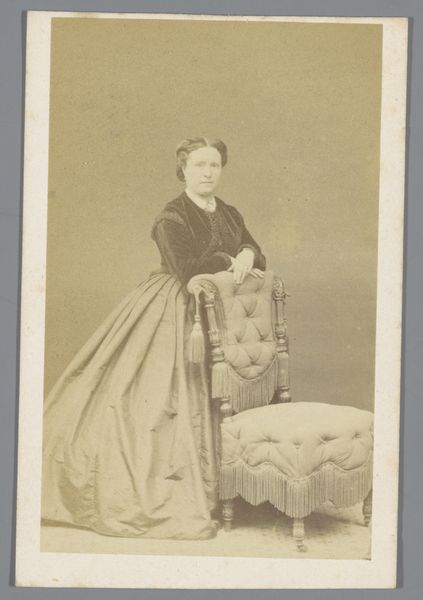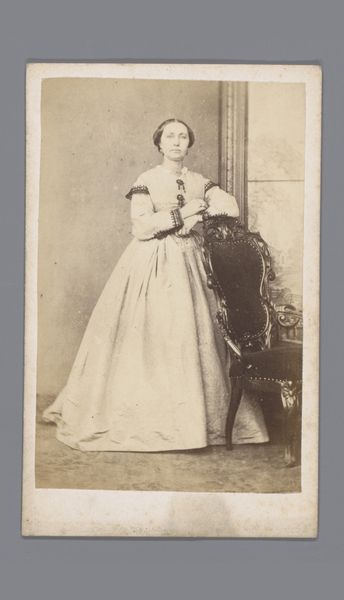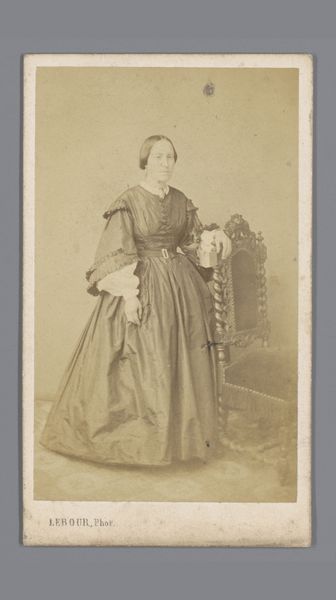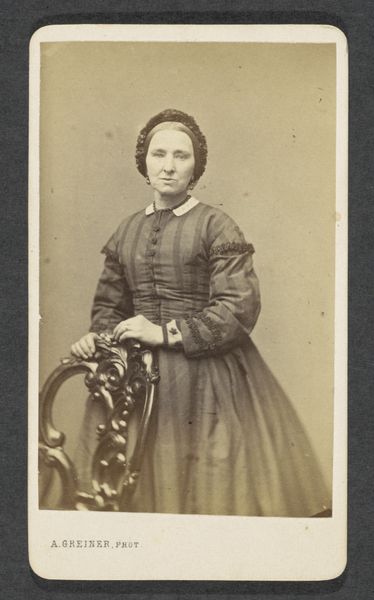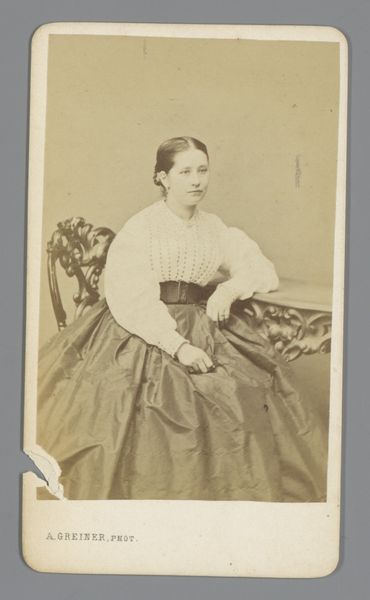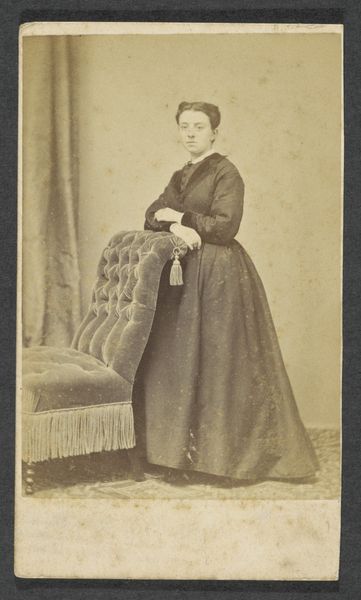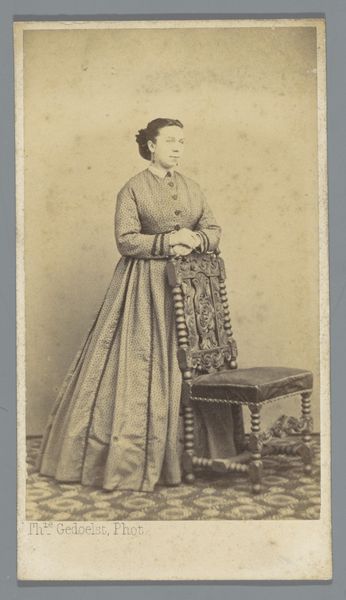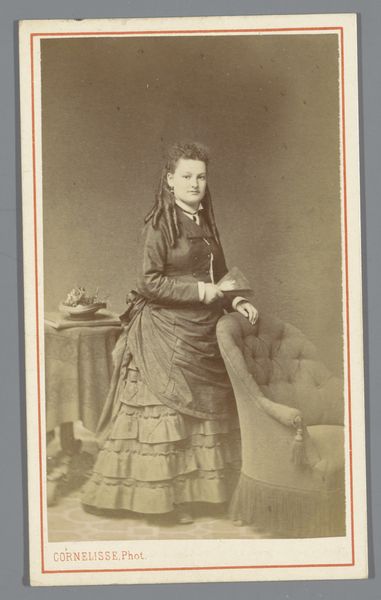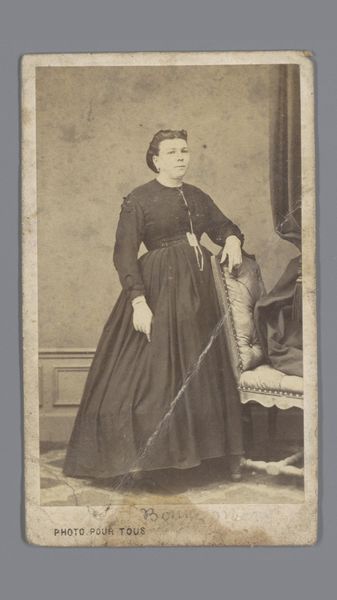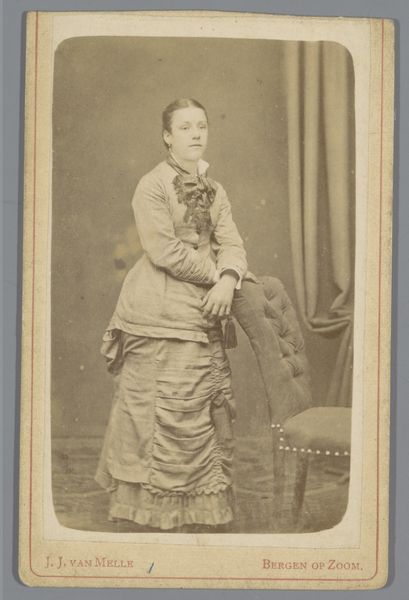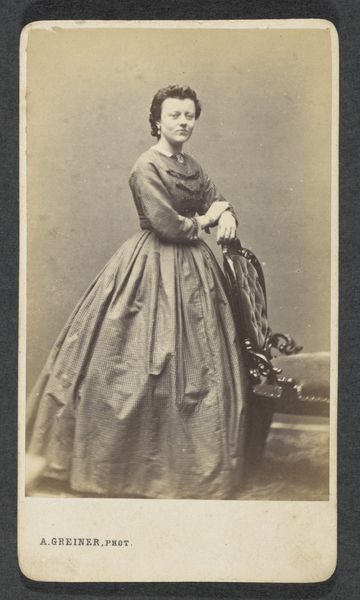
photography, albumen-print
#
portrait
#
photography
#
albumen-print
Dimensions: height 103 mm, width 61 mm
Copyright: Rijks Museum: Open Domain
Curator: Before us we have an albumen print simply titled "Portret van een onbekende vrouw uit de familie Marmelstein," placing its creation somewhere between 1864 and 1878. The artist, or photographer rather, is listed as J. Korsten. Editor: The soft, sepia tones and diffused light lend a wistful quality to the image. She's holding a chair with her right arm in what feels like a stagey but also casual manner. The massive size of her skirt commands attention! Curator: Exactly. These portrait photographs, very popular at the time, provided a relatively accessible way to capture likeness and present oneself to the world. There is so much symbolism in the objects and postures—it became a new visual language of the era. Editor: I’m intrigued by the unnamed woman. The 'unknown woman' title speaks volumes. The erasure of women’s contributions through these gaps in naming practices reveals a lot about power. Was she perhaps excluded from family stories later in time? Curator: That’s insightful, as such historical details become blurry with time. But this chair, for instance: it symbolizes domesticity, certainly, but more abstractly also support and status within the family and larger social spheres. Editor: Her pose and costume signal middle class. It feels posed and static. The composition does reflect nineteenth-century standards around representing women. Did she have agency? Is she choosing to conform, or is this imposed upon her? I guess these pictures reinforce dominant ideologies in their very structure. Curator: Certainly, there's a complex negotiation happening. And as an albumen print, it is both ephemeral and enduring, much like identity itself. Editor: So, this portrait leaves me with many unanswered questions, a somber but important consideration of identity and history, especially female history. Curator: Yes, an intriguing dance between personal presence and constructed image, as every image becomes an archive to reread our social and cultural evolution.
Comments
No comments
Be the first to comment and join the conversation on the ultimate creative platform.
